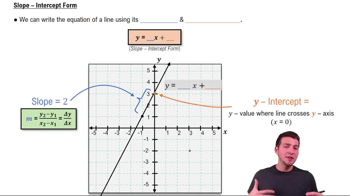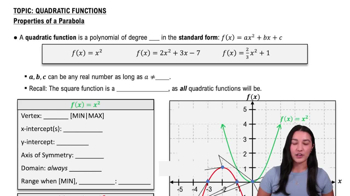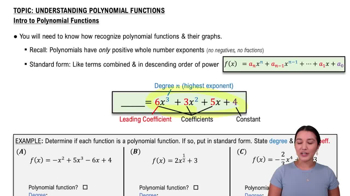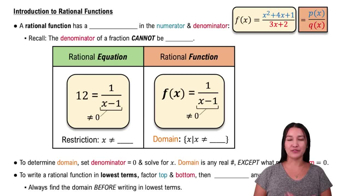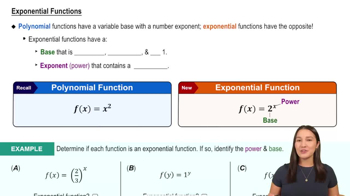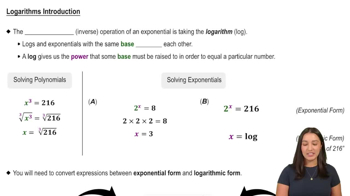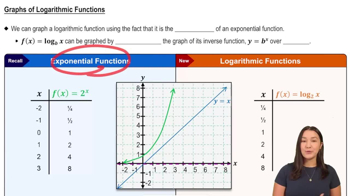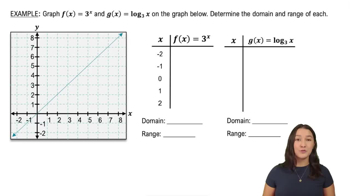Table of contents
- 0. Functions7h 52m
- Introduction to Functions16m
- Piecewise Functions10m
- Properties of Functions9m
- Common Functions1h 8m
- Transformations5m
- Combining Functions27m
- Exponent rules32m
- Exponential Functions28m
- Logarithmic Functions24m
- Properties of Logarithms34m
- Exponential & Logarithmic Equations35m
- Introduction to Trigonometric Functions38m
- Graphs of Trigonometric Functions44m
- Trigonometric Identities47m
- Inverse Trigonometric Functions48m
- 1. Limits and Continuity2h 2m
- 2. Intro to Derivatives1h 33m
- 3. Techniques of Differentiation3h 18m
- 4. Applications of Derivatives2h 38m
- 5. Graphical Applications of Derivatives6h 2m
- 6. Derivatives of Inverse, Exponential, & Logarithmic Functions2h 37m
- 7. Antiderivatives & Indefinite Integrals1h 26m
0. Functions
Common Functions
Problem 1.3.43b
Textbook Question
Splitting up curves The unit circle x² + y² = 1 consists of four one-to-one functions, ƒ₁ (x), ƒ₂(x) , ƒ₃(x), and ƒ₄ (x) (see figure)<IMAGE>.
b. Find the inverse of each function and write it as y= ƒ⁻¹ (x)
 Verified step by step guidance
Verified step by step guidance1
Step 1: Understand the unit circle equation x^2 + y^2 = 1, which represents a circle centered at the origin with a radius of 1.
Step 2: Recognize that the unit circle can be divided into four segments, each representing a one-to-one function. These segments correspond to the four quadrants of the circle.
Step 3: Identify the four functions: f₁(x) for the top right quadrant, f₂(x) for the top left quadrant, f₃(x) for the bottom left quadrant, and f₄(x) for the bottom right quadrant.
Step 4: For each function, express y in terms of x. For example, for f₁(x), y = sqrt(1 - x^2) since it represents the top half of the circle where y is positive.
Step 5: Find the inverse of each function by solving for x in terms of y. For instance, for f₁(x), the inverse would be x = sqrt(1 - y^2), and express it as y = f⁻¹(x).
Recommended similar problem, with video answer:
 Verified Solution
Verified SolutionThis video solution was recommended by our tutors as helpful for the problem above
Video duration:
5mPlay a video:
Was this helpful?

 5:57m
5:57mWatch next
Master Graphs of Common Functions with a bite sized video explanation from Nick
Start learningRelated Videos
Related Practice



